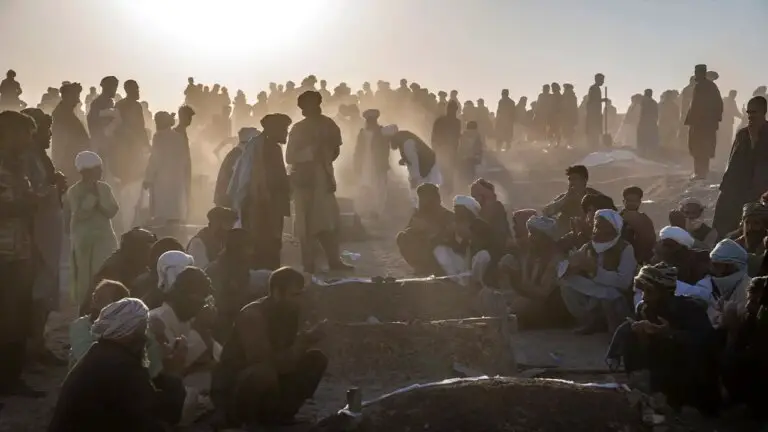Earthquake Strikes Western Afghanistan, Second Quake This Week
In a series of unfortunate events, western Afghanistan has been hit by another powerful earthquake on Wednesday morning, just days after a devastating quake claimed the lives of over 2,000 people in the Herat province. The recent quake has sparked a landslide, leading to the blockage of a major highway, and over a hundred people have been hospitalized.
The magnitude 6.3 earthquake on Wednesday occurred approximately 17 miles outside the provincial capital, Herat, and had a depth of 6 miles, according to the U.S. Geological Survey. This seismic activity triggered a landslide that obstructed the vital Herat-Torghondi highway, as confirmed by Information Ministry spokesman Abdul Wahid Rayan.
Medical organization Doctors Without Borders (MSF) reported that Herat regional hospital received 117 injured individuals in the aftermath of Wednesday’s tremor. MSF promptly dispatched additional medical supplies to the hospital and established four more medical tents to accommodate the growing number of patients.
Chahak village, which had been unscathed by previous tremors, was tragically flattened by Wednesday’s earthquake, leaving no fewer than 700 homes destroyed. Miraculously, there have been no reported fatalities in Chahak, as the residents had taken shelter in tents, fearing further quakes.
With their homes and livestock lost, villagers are grappling with despair and concern about the impending harsh winter months. Many of them, having never experienced an earthquake before, live in constant fear of further ground shaking.
The epicenter of Saturday’s quake, also of magnitude 6.3, was located about 25 miles northwest of Herat’s provincial capital, and numerous strong aftershocks followed.
Taliban officials have declared that over 2,000 people perished as a result of the previous earthquakes, though they did not provide a detailed breakdown of casualties.
The affected villages now lie in ruins, with survivors wrestling with the loss of numerous family members. In some places, volunteers have outnumbered living residents as they search through the debris and dig mass graves.
Almost 2,000 houses across 20 villages were destroyed, with just one government-run hospital available in the afflicted area. Zinda Jan is noted as the hardest-hit area, with over 1,300 casualties and almost 500 individuals still unaccounted for.
The United Nations has reported extreme levels of destruction in the district of Injil and has expressed concerns about the psychological distress experienced by children in the aftermath of the earthquake.
Afghanistan is prone to earthquakes due to the presence of fault lines and the interaction of nearby tectonic plates. Recent tremors have added to the country’s seismic woes, including a magnitude 6.5 earthquake in March and another in June 2022 that resulted in substantial damage and loss of life.
Neighboring Pakistan has offered assistance, but the delivery of humanitarian aid has been stalled, awaiting clearance from the Taliban. Tensions between the two countries have escalated due to Pakistan’s deadline for undocumented migrants, including 1.7 million Afghans, to leave by the end of October.

